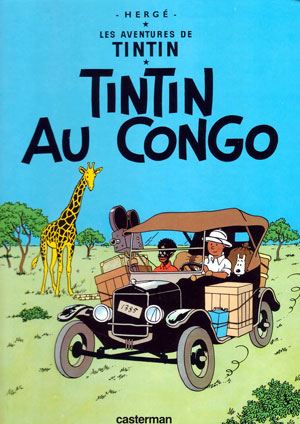Comics /
European Comics
Tintin is the Right Symbol for Belgium Resistance to Terror

By Hervé St-Louis
March 23, 2016 - 00:08
Following the terrorist attacks In Brussels on March 22, 2016, many commentators have criticized the use of Georges Rémi (Hergé)’s Tintin as a symbol of Belgian resistance to terrorism. However, Tintin, notwithstanding his enormous colonial and racist cultural heritage is the right symbol for Belgian resistance to terror. Here is why.
At
Salon.com, Scott Timberg wrote about how Tintin was an uncomfortable symbol of Brussels’s solidarity following the attack. Similarly,
International Business Times’s Alex Garofalo penned a similar article looking at Tintin’s racist heritage and how it was a difficult symbol for Belgian unity. Tintin, as they remarkably remind readers was created in 1929 as a mouth piece for a Catholic newspaper called
Le Petit vingtième.
Tintin’s most infamous outing was in his second adventure in the Congo. In both the original
Tintin in the Congo, and the redrawn version, the heroic reporter’s treatment of Congolese is atrocious and colonial. They are depicted as little more than humanized caricatures with blackface. Tintin treats them as idiots and incompetents who require the support of a white man to organize and fend for themselves. Hergé’s treatment of Chinese, Russians, Jews, and American aborigines was barely better. In 2015, a library in Winnipeg, Canada removed Tintin books from the general circulation following complaints from patrons.
I wrote a paper and did a class presentation on the colonial treatment of Congolese in
Tintin au Congo way back when I was an undergraduate student at McGill University in a French literature course. The criticisms against Tintin being a symbol of racism and colonialism are indeed correct. Hergé tried to skirt the controversy for decades but as with anything Tintin, his hardcore supporters would not allow him to evolve the character much.
Tintin is an important comic book character and one of the most read. Tintin’s design is an abstraction of a typical Belgian man. Tintin’s simple design can appeal and represent the everyman, provided that man is white. Tintin’s head is a circle with barely any features. Apart from his stubborn curiosity and sense of Catholic rightness, Tintin has little direct personality that can be ascertained. He has no love interest, although he has a strong friendship with Captain Haddock, Dupont (Thomson) and Dupond (Thompson), Professor Tournesol (Calculus), La Castafiore (Bianca Castafiore), and enormous love for his dog Milou (Snowy).
Yet, Tintin has crossed the world and evolved somewhat from the Fascists and reactionary Catholic environment that propelled his success. Tintin, was created to entertain young Belgian boys in a Belgium threatened by Nazi Germany. Tintin was a comic book created to not ruffle neighbouring Germany yet, Hergé still allowed himself to depict the Anschluss (annexation) of Austria using fictitious countries. Tintin has proven subversive enough to criticize power during the Second World War and continued to discover the world from a European perspective after the war.
Tintin’s Post War stories parallel the decolonization of Africa by Belgium and the loss of world power status of many European nations. No longer was Europe the leader of the world. This is where Tintin’s contribution to comics starts to reveal why he matters as a symbol of Belgium. Tintin is a reporter. His work is to criticize power and to expose lies. Reporters are the direct inheritors of the king’s fools, the Fifth Estate that include all cartoonists.
Cartoonists have become victims of this great conflict of civilization that resulted in attacks against Belgium.
Charlie Hebdo paid the price in 2015 for its provocations against radical Muslims. Cartoonists, like journalists are often the first ones to suffer from terror and attacks by power and those who challenge it. Tintin is both a reporter and a cartoon. He is the embodiment of all that speaks for liberty and the free circulations of ideas, no matter how repellant some of them are.
Tintin is an abstraction in which every Belgian and the world can use to empathize with the resistance against Brussels’ attacks. Tintin is a representation of Belgium’s absurdity revealing itself an imperfect society where the treatment of the other is sometimes imperfect. Belgian society has racist elements. It has reactionaries and people calling for the worse retributions against Islam, right now. This is Belgium. But Belgium is also about the intrepid quest for humanity and resistance that Tintin has represented imperfectly since his creation. There is no better symbol for Belgian resistance to terrorism than Tintin. Let the reporter do his job and fight on against bad guys.
Last Updated: January 17, 2025 - 08:20

